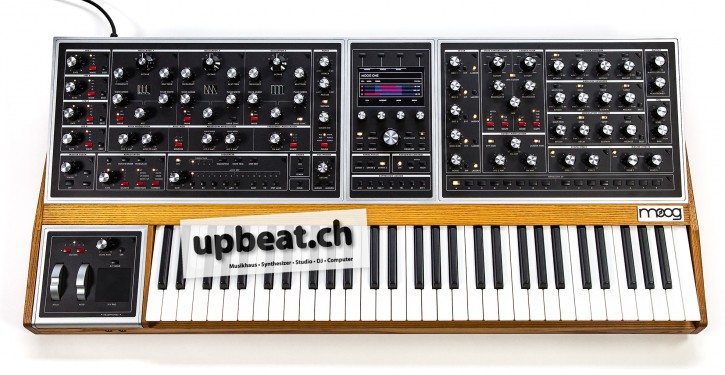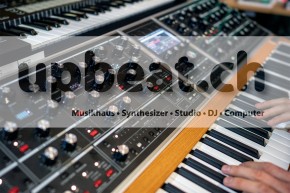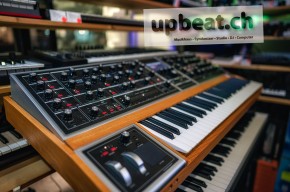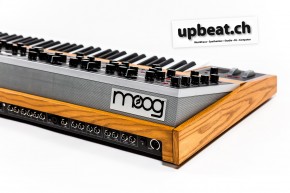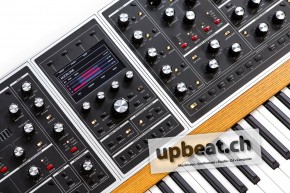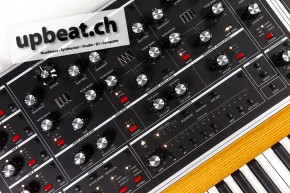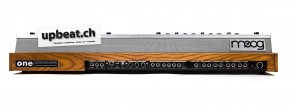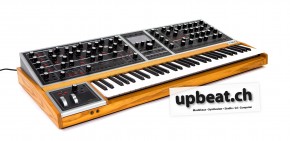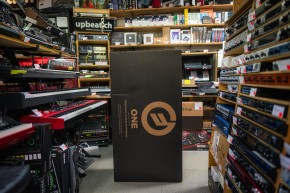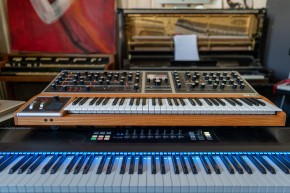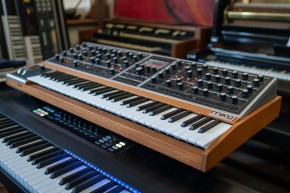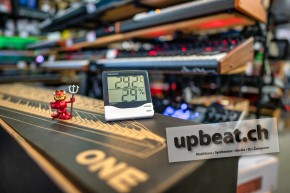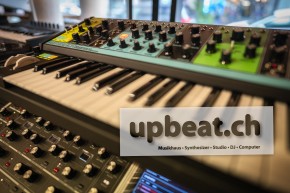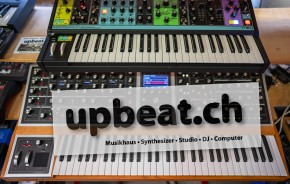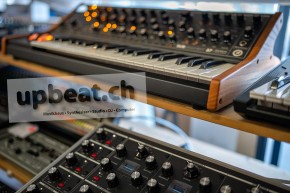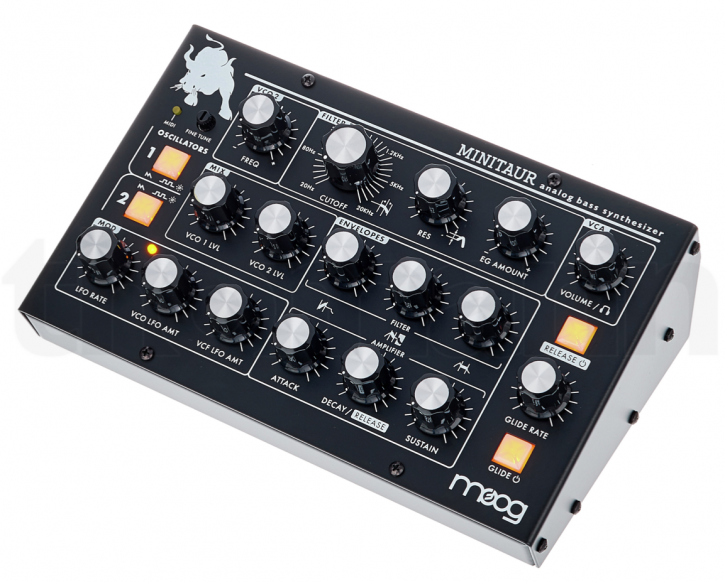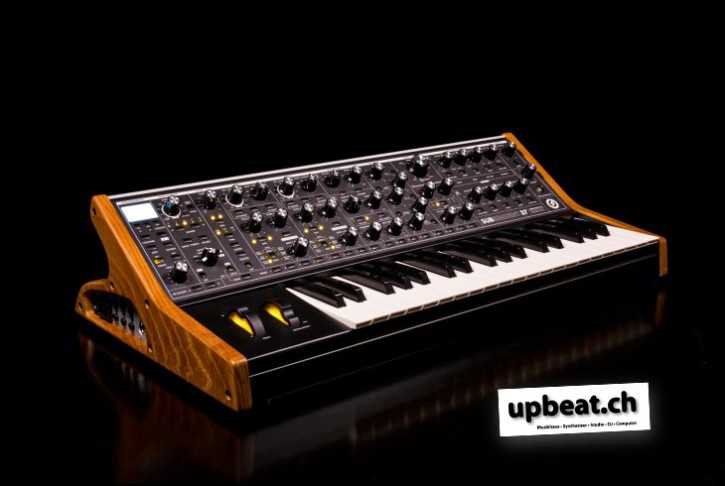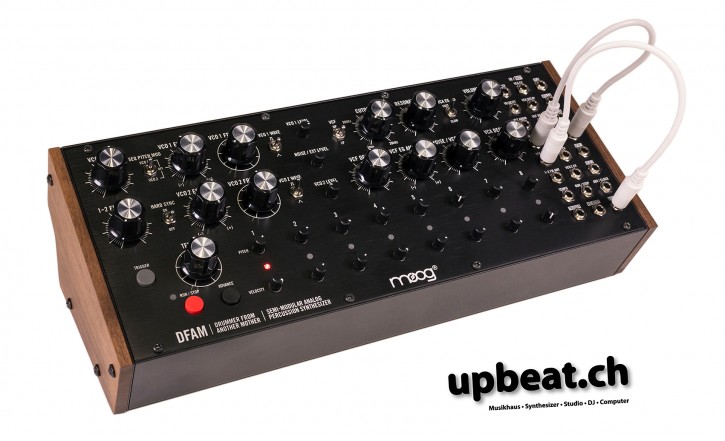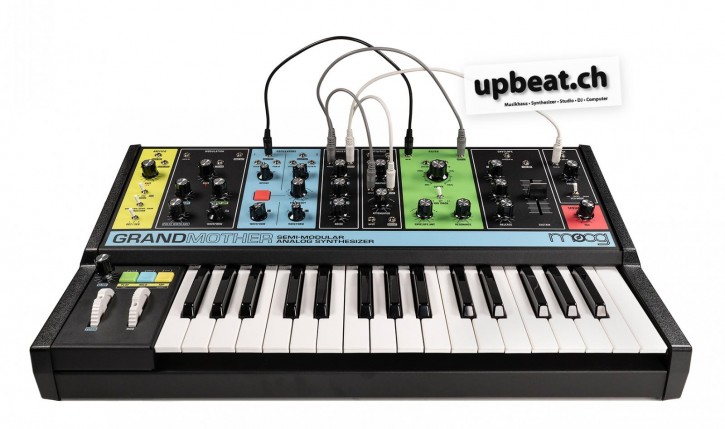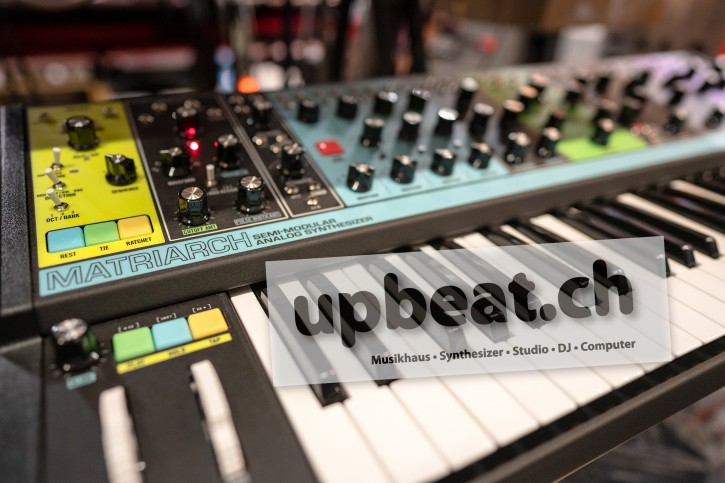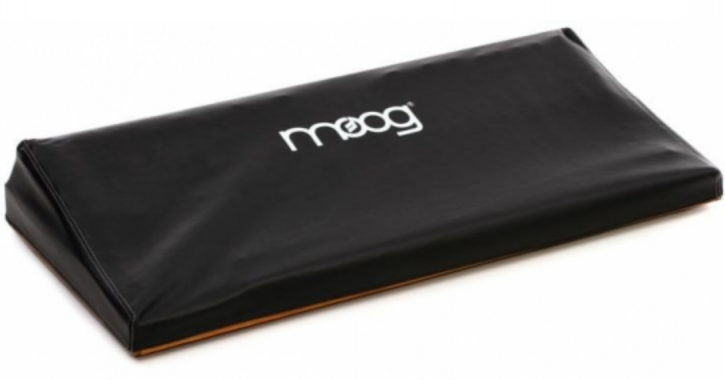Moog One 16-voice Analog Synthesizer
Hersteller: Moog
Weitere Informationen:
http://www.moogmusic.com/products/moog-one
INFORMATION
wird nicht mehr hergestellt
Moog ONE 16 Voice
As the first polyphonic Moog synthesizer in more than three decades, Moog One spearheads a new era of analog synthesis.
Handcrafted at the Moog factory in Asheville, North Carolina, Moog One is a programmable, tri-timbral analog synth featuring an intuitive tactile interface that transcends the boundary
between instrument and artist, allowing you to achieve your musical goals unimpeded.
And then, of course, there’s that legendary Moog sound. Moog analog circuits are renowned for their unrivaled punch and rich harmonics, and Moog One represents the definitive evolution of these classic circuits.
Years of research went into this analog dream synth, and it shows in every aspect of its masterful design.
Under your fingers, Moog One will exceed your every expectation as it inspires your musical creativity and opens portals to a vast sonic universe.
The Moog One Synth Architecture
The Moog One has 16-voices, with a sound engine that is described as ‘the most advanced architecture ever conceived for a Moog synthesizer.’
Per voice, the Moog One features:
- three analog voltage-controlled oscillators (VCOs);
- two independent analog filters (a Variable State filter and a Moog Ladder Filter) that can be run in series or parallel;
- a dual-source variable analog noise generator;
- an analog mixer with external audio input;
- four LFOs; and
- three envelope generators.
Essentially three independently addressable polysynths in one, the Moog One tri-timbral architecture
lets you assign, split, layer, and stack voices with up to 48 oscillators in Unison mode.
Each synthesizer ifeatures its own step sequencer, arpeggiator, and effects processor.
The Panel Focus module simplifies and streamlines the complexities of multitimbral synthesis. Choosing a Synth for panel focus switches control of the Moog One front panel knobs and buttons to the selected Synth layer. You can also select multiple Synth layers concurrently to simultaneously tweak multiple Synths.
You can split or layer the three timbres — each with its own sequencer, arpeggiator, and onboard effects library — across the 61-note Fatar keyboard with velocity and aftertouch.
Moog One Synthesizer Voice:
Here are details of each Moog One synth voice:
- VCOs – The Moog One voice is driven by three newly-designed analog VCOs. Each oscillator outputs a user-defined mix of the selectable triangle/sawtooth wave, plus a variable-width pulse wave. Unlike most traditional oscillator designs, you can shape and modulate the rise/fall time of the triangle wave, and the reset phase of the sawtooth wave, to build analog tones that are rich and complex. Moog says that blending the tri/saw and square/pulse waves together ‘opens the harmonic floodgates’. The Moog One oscillator section is also equipped with waveform modulation, hard sync, ring modulation, and FM (Frequency Modulation).
- Noise Source – Each Moog One voice has access to an advanced dual-source analog noise generator that lets you select, mix, and dynamically articulate different noise colorations (white, red, and purple) via its dedicated noise envelope generator. This unique module is a potent tool for adding percussive attack, breathiness, or full-spectrum impact to a sound.
- Analog mixer – The Moog One mixer provides volume controls and filter routing for each oscillator, noise generator, ring modulator, and external audio input, allowing sound sources to be shaped by using filters independently or in combination.
- Moog Ladder and State Variable filters – the Moog One offers two kinds of analog filters – a multimode State Variable filter and a Moog Ladder filter with selectable 1-, 2-, 3-, and 4-pole lowpass/highpass modes.
- Three assignable envelope generators – There are three Moog One assignable DAHDSR (Delay, Attack, Hold, Decay, Sustain, Release) EGs that go way beyond traditional ADHR envelopes in terms of flexibility. In addition to looping, synchronization, and time-scaling capabilities, the character of each of these envelopes can be molded by per-stage envelope curves.
- Low-frequency oscillators – Moog One offers four wide-range LFOs per voice, assignable to nearly any destination. Features include MIDI synchronization and clock divisions, start delay time, number of repeats per instance, fade-in and -out times, and more. Using the Variation parameter, you can smoothly morph between sine and triangle, square and pulse, sawtooth and ramp, or sample and hold and noise waveshapes.
- Onboard effects – the Moog One offers a library of programmable per-synth and master bus effects, including chorus, delay, phase, bit reduction, vocoding, and a suite of premium Eventide reverbs such as Blackhole, Shimmer, Plate, Room, and Hall. Effects can be applied as Synth Effects and Master Bus Effects. Synth Effects are applied to individual timbral layers, while Master Bus Effects can be accessed via sends from all three synthesizers. The effects are digital, but the Moog One audio path is completely analog when the effects are true bypassed.
The Moog One Offers Hands-On Control
Clad in a handcrafted ash cabinet, the Moog One aluminum front panel is fitted with 73 knobs and 144 buttons. Extended on-screen functionality is accessed via More buttons (one for each module) that serve up additional parameters in the center-panel LCD.
The status of all the controls can be stored in a massive bank of presets and the keyboard’s Browser and interactive LCD center panel make finding your sounds easy; saved Presets can also be assigned to front panel Performance Sets for instant recall.
The Snapshot button lets Moog One capture and recall a time-stamped snapshot of a preset at its current settings, eliminating the need to incrementally save data manually while experimenting.
Moog One Presets
A Moog One Preset is a self-contained blueprint, saving the parameters for all three layers of timbrality, along with each timbre’s sequencer, arpeggiator, and modulation settings. The Moog One can store and recall tens of thousands of presets that you can categorize, edit, notate, and share via USB drive.
Up to 64 presets can be grouped to a Moog One Performance Set, where they are immediately selectable via the front-panel Bank/Preset button configuration.
Presets can be shared with an unlimited number of Performance Sets, allowing quick access to desired presets for performance.
Finally, User Spaces save global behaviors, MIDI settings, knob behaviors, port and pedal configurations, and even the LED brightness level of your working environment. All the settings can be saved to a USB thumb drive, so you can run any any Moog One with your personal settings.
Fatar keyboard and X/Y pad
The Moog One offers a premium 61-note, velocity- and aftertouch-sensitive Fatar TP-8S keybed. The keyboard is semi-weighted evenly across its keys.
The enhanced Left-Hand Controller (LHC) features pitch-bend and mod wheels, made of milled aluminum and a fully assignable, pressure-sensitive, 3-axis X/Y pad that provides additional expression and continuously variable control.
Features:
- 8- or 16-voice polyphony
- 3 VCOs per voice with waveshape mixing and OLED displays
- Unison mode (up to 48 oscillators on the 16-voice instrument)
- 2 filters per voice with filter mixing (2 multimode State Variable filters that function as a single filter, and a classic lowpass/highpass Moog Ladder filter)
- 3 DAHDSR envelopes per voice with user-definable curves
- 3-part multitimbrality
- Separate sequencer and arpeggiator per timbre
- Chord memory
- Dual-source noise generator with dedicated envelope
- Mixer with external audio input
- Ring modulation with selectable routing
- Oscillator FM and hard sync with selectable routing
- 4 assignable LFOs
- Premium 61-note Fatar TP-8S keybed with velocity and aftertouch
- Assignable pressure-sensitive X/Y pad
- Digital Effects (Synth and Master Bus)
- Eventide reverbs
- Selectable glide types
- USB and DIN MIDI
- Save, categorize, and recall tens of thousands of presets
- Create Performance Sets that make up to 64 presets accessible at the push of a button
- 2 x ¼” stereo headphone outputs
- 2 pairs of assignable ¼” outputs (supports TRS and TS)
- 4 x ¼” hardware inserts (TRS)
- 1 x ¼” external audio input (line-level)
- 1 XLR + ¼” TRS combo external audio input with trim knob
- 9 assignable CV/GATE I/O (5-in/4-out)
- USB drive support for system and preset backup
- LAN port for future expansion
DIMENSIONS (W X D X H)
107 x 51 x 18 (cm)
Achtung es wird empfohlen den Moog ONE zu Zweit zu transportieren
mit Verpackung 36 kg
muss in Zürich abgeholt werden, kein Versand oder
nach Absprache KurierDienst
Matt Johnson Jamiroquai Moog One Demo
Firmware Update 1.5
Firmware update 1.5
Weitere Informationen: http://www.moogmusic.com/products/moog-one
Bewertungen

